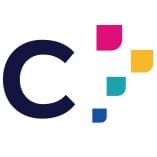Google are getting really serious about web page experience. So serious in fact that they have announced that they will roll out a new web page experience ranking signal from 2021 and give everyone at least six months notice of the algorithm change.
- Google rolled out it’s Core Web Metrics in early May 2020.
- In 2021 it will apply Core Web Metrics as a web page experience ranking signal.
- Due to COVID-19, the announcement will be made six months before implementation.
- Initially it appears that the new page experience ranking will apply to the Top Stories feature in Search on mobile.
- Best practice will be to improve web page experience regardless of this specific application.
- Accelerate Mobile Pages, or AMP, will no longer be a requirement to rank in this area.
- Core Web Metrics are already available in PageSpeed Insights, Lighthouse, Search Console and the Web Vitals Chrome extension.
If you’re a business owner, website owner or webmaster, staying up to date with changes in search engine behaviour is vital; It benefits you and your services. However, the key point in all this is not about you it’s about your users. To this end, there’s been a continuous push from Google over recent years for websites to be user-centric.
In late 2014 Google announced that it would flag up mobile sites in the search results.
Then in February 2015 they gave us all 54 days notice that we should make our websites mobile-friendly.
This was followed, in December 2015, by the news that HTTPS pages would get preference in search.
All of these common-sense announcements by the Mountain View search giant add up to one thing; making the web a better place by focusing on the user experience.
Mobile searches now count for at least half of web traffic, so mobile-friendly websites get crawled by Google before desktop-only sites.
In addition, mobile sites aren’t always viewed from super-fast broadband connections. If a mobile user is on a 4G or 3G connection, then desktop-centric sites load really slowly. Website owners who take this into account and make their sites fast will not only make the user experience great for mobile users but desktop visitors too. Google prefers fast websites.
Now, the addition of page experience ranking means that how your web pages perform, once they’ve loaded on mobile and quickly, is the new holy grail. This is why Google announced its new set of metrics, core web vitals, just a few weeks ago.
Core Web Vitals
Early in May Google made an announcement that it was going to be sharing three new web metrics or Core Web Vitals. These three new metrics are:
- Largest Contentful Paint (LCP).
- First Input Delay (FID).
- Cumulative Layout Shift (CLS).
These all sound quite geeky, so what do they mean in plain English and how do website owners work towards these new goals?
Largest Contentful Paint (LCP)
Largest Contentful Paint, or LCP, is a measurement of your web page experience for loading behaviour.
Basically, which is the biggest piece of content to be displayed in your browser and does this affect the user experience? A really large image or video might be the culprit and so you want to optimise your website to be as fast as possible in this department.
LCP Fixes
You should optimise all your web page assets to be as efficient as possible. Compressing images is a good example. Your designers can do this before you upload images to your website, using Compressor.io or TinyPNG for instance.
Other things you can do to fix Largest Contentful Paint are:
- Optimise your webserver’s speed.
- Use a Content Distribution Network (CDN) to host and distribute assets.
- Use caching.
First Input Delay (FID)
First Input Delay (FID) is a measure of interactivity. How quickly, once your web page has started loading, can a user interact with it? E.g. scroll, click a link or hit a button. Your goal is to have the page display as quickly as possible (First Contentful Paint (FCP)), then be useable almost straight away. Google will rate pages as good if they are interactive with 100ms, that’s one tenth of a second.
FID Fixes
- Reduce the impact of third-party code.
- Reduce JavaScript execution time.
- Minimise main thread work.
- Keep request counts low and transfer sizes small.
Cumulative Layout Shift (CLS)
Cumulative Layout Shift (CLS) is a measure of the visual stability of a web page. Ever loaded a page on mobile, started to read the content and then an ad has loaded and what you were reading got pushed down the page? That’s layout shift and it’s annoying. A good user experience guards against this sort of layout shift happening.
CLS Fixes
- Always include size attributes on your images and video elements.
- Reserve the required space with something like CSS aspect ratio boxes.
- Never insert content above existing content, except in response to a user interaction.
- Prefer transform animations to animations of properties that trigger layout changes.
- Animate transitions in a way that provides context and continuity from state to state.
Measuring Core Web Vitals
Google has already provided the tools to measure Core Web Vitals;
- Google Search Console.
- Lighthouse.
- Chrome browser dev tools.
- PageSpeed Insights.
- Chrome browser Web Vitals extension.
Our advice is that even if your website isn’t in the Top Stories feature in search on mobile then it’s best practice to start focusing even more on your user experience. After all, if user experience is going to be a ranking signal then it’s well worth getting ahead of the curve and making your site as friendly and fast as possible.

Call us for help on 01276 402 381 or complete the contact form.
